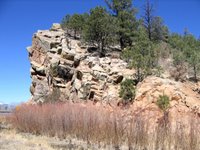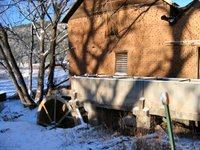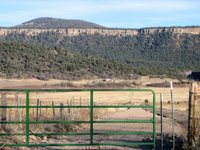

It's a town on the old Sante Fe Trail and a historical site. The town is some 40 miles north of Las Vegas, New Mexico on I25 heading toward Colorado.
Coming across the high pains, the rock that looks so much like the wagons they were driving, could be seen from many miles away and was a familiarbeacon on the old Trail.





















